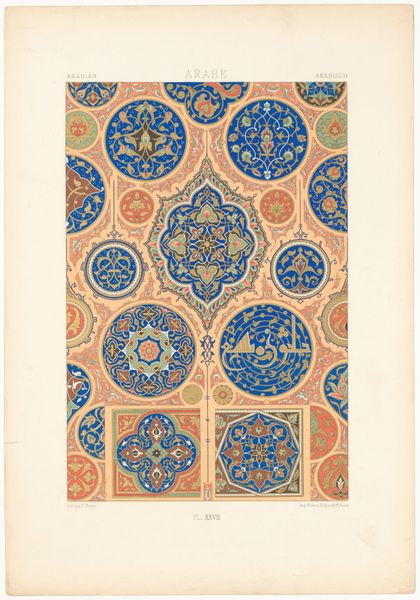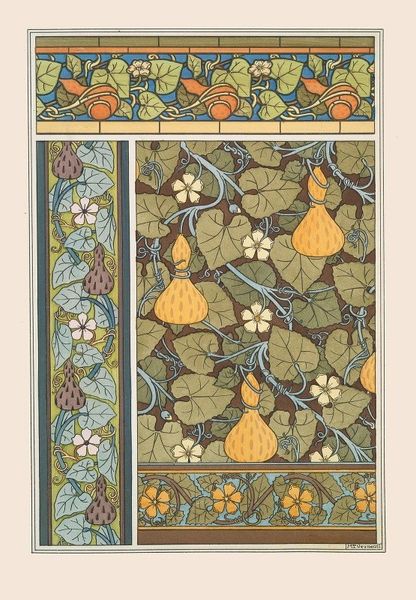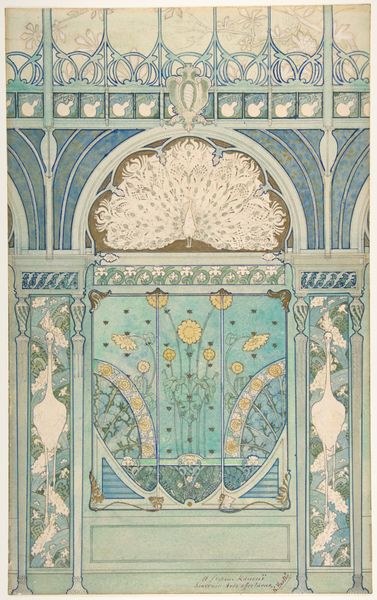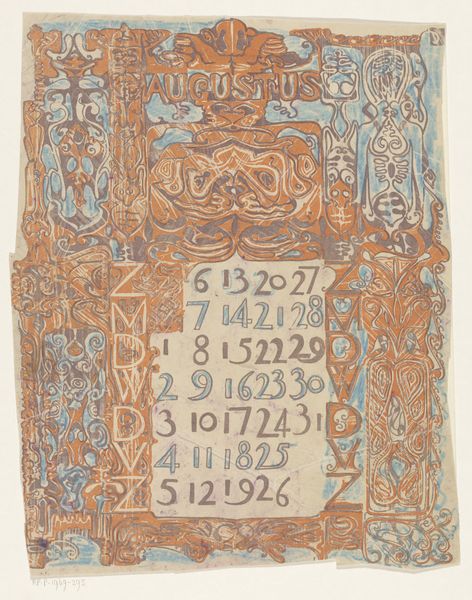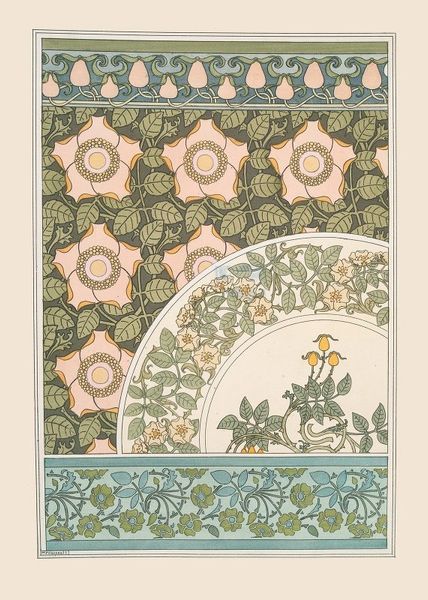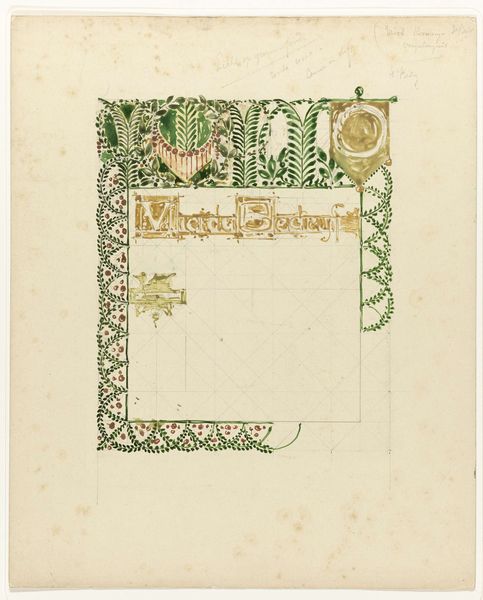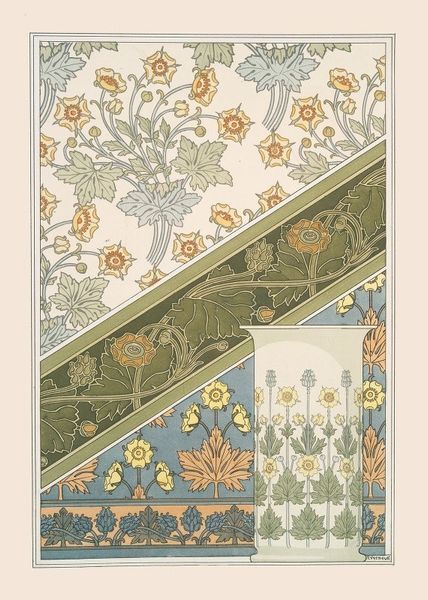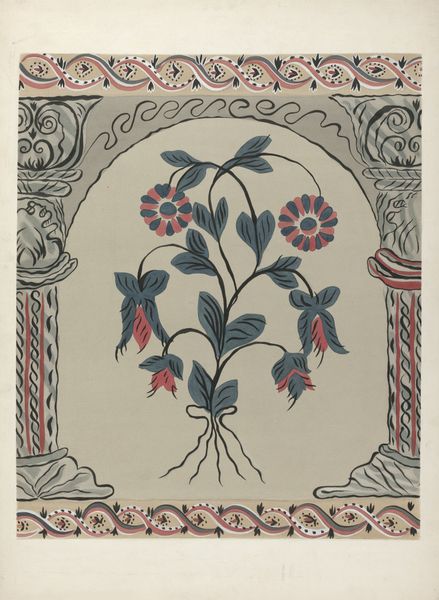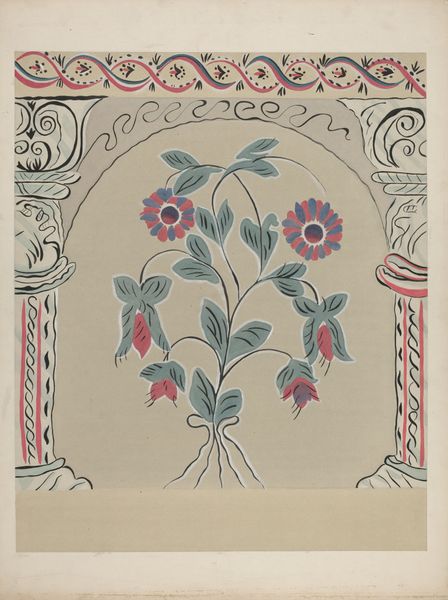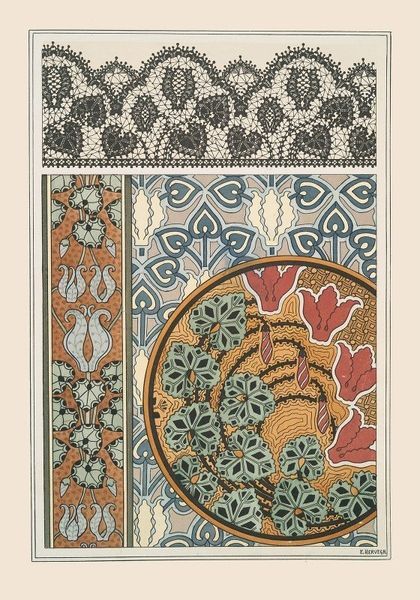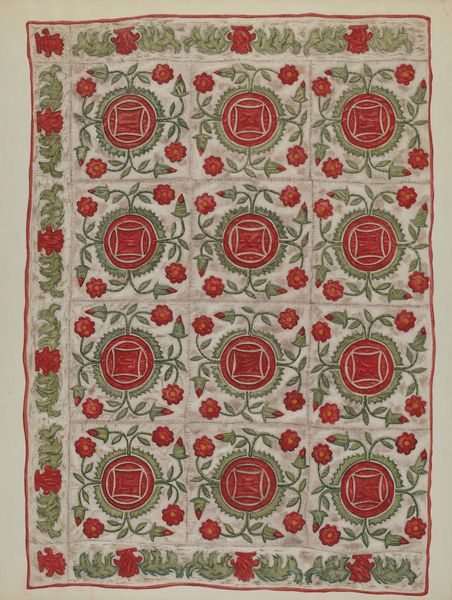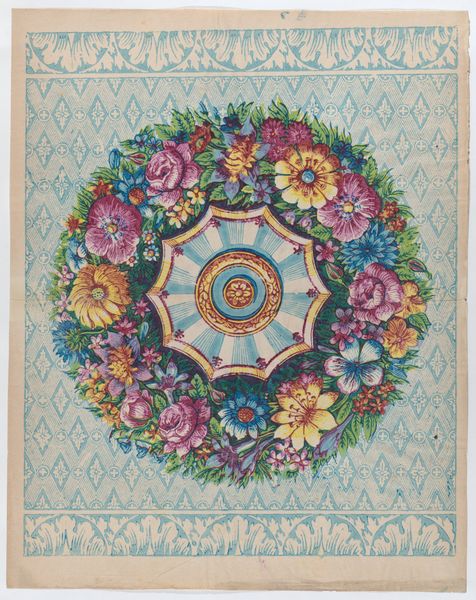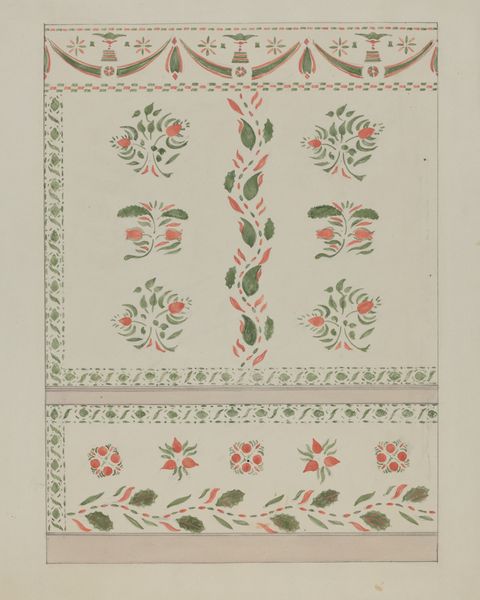
drawing, graphic-art, print, paper, typography, poster
#
drawing
#
graphic-art
#
art-nouveau
# print
#
landscape
#
flower
#
paper
#
pattern background
#
typography
#
decorative-art
#
poster
Dimensions: height 398 mm, width 280 mm
Copyright: Rijks Museum: Open Domain
Theo Nieuwenhuis created this calendar page for September 1899 using a color woodcut. It’s a striking example of the decorative arts in the Netherlands at the turn of the century. Looking at the piece, we can see how it creates meaning through visual codes. The stylized, organic forms and the muted color palette are characteristic of the Art Nouveau movement, which sought to integrate art into everyday life and challenge the rigid industrial aesthetic of the time. Nieuwenhuis, working in the Netherlands, drew inspiration from local flora, incorporating them into the design. This calendar reflects a broader cultural shift. As industrialization progressed, there was a longing for a return to nature and craftsmanship. Artists and designers like Nieuwenhuis sought to elevate everyday objects, such as calendars, to the level of art. Resources like design journals and museum collections help us understand this historical context. The meaning of this art is contingent on its social and institutional context.
Comments
No comments
Be the first to comment and join the conversation on the ultimate creative platform.

